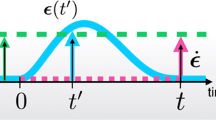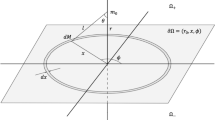Abstract
SOME paradoxes which have occurred to me and have been pointed out to me also by some of my colleagues (especially Dr. Fues, Copenhagen), show that the fundamental statement of my letter (NATURE, Feb. 5) published under the above title, is incorrect. It is not true that the reciprocal impenetrability of the molecules allows only of the Heisenberg-Dirac determinant solutions, and excludes all others. On the contrary, all the symmetrical and antisymmetrical characteristic solutions which existed for absolutely penetrable molecules remain for a (not one-dimensional) gas with molecules having a radius very small compared with the mean distance; only the characteristic values are a little changed, and the characteristic functions undergo a deformation in the immediate neighbourhood of the ‘diagonal spaces.’ If, therefore, the Pauli principle is valid not only for the electrons of an atom but also for the translatory motion of gas molecules, with radius almost zero, then such a remarkable relation between the molecules cannot be so simply explained by wave mechanics as my mistake led me to believe.
Similar content being viewed by others
Article PDF
Rights and permissions
About this article
Cite this article
EHRENFEST, P. Relation between the Reciprocal Impenetrability of Matter and Pauli's Exclusion Principle: a Correction. Nature 119, 602 (1927). https://doi.org/10.1038/119602c0
Issue Date:
DOI: https://doi.org/10.1038/119602c0
Comments
By submitting a comment you agree to abide by our Terms and Community Guidelines. If you find something abusive or that does not comply with our terms or guidelines please flag it as inappropriate.



